Alessandro Marcello's Oboe Concerto
Alessandro Marcello's Oboe Concerto
Alessandro Marcello’s Oboe Concerto in D Minor is an early example of a solo concerto (distinct from the older, ensemble-based concerto grosso), born from the realization that the style of an operatic aria could be adapted for an instrument with orchestral accompaniment. Its earliest champions included Antonio Vivaldi and Alessandro Marcello, who quickly established the three-movement form still standard for concertos today.
Alessandro Marcello's Oboe Concerto
All three movements of the Oboe Concerto show genesis in song. The first movement, Andante e spiccato, could be a mid-tempo aria, while the Adagio is lyrical and mournful. The vigorous finale, Presto, resembles the “rage” arias of Baroque operatic heroes.
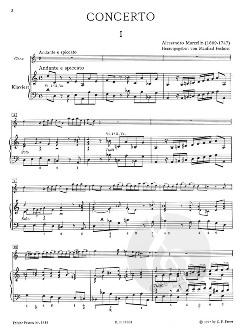
Andante e spiccato
The earliest known surviving manuscript of Alessandro Marcello’s Oboe concerto in D minor exists not as a score from the composer’s own hand, but as an arrangement for solo keyboard by contemporary J.S. Bach. This arrangement, dating from 1713-1714, is part of a collection of works entitled '16 Konzerte nach verschiedenen Meistern', BWV 972–987 (16 concerts according to different masters). It is Bach’s arrangement on which this duo version for guitar is heavily based. Bach discovered this concerto and other works by Italian masters while under the employment of Duke Wilhelm Ernst in Weimar. The musical library of the ducal court was rich with orchestral works by Vivaldi, Corelli, Torelli, Frescobaldi and of course Marcello (both Benedetto and Alessandro). Bach saw this as an opportunity to learn about the Italian style, and proceeded to arrange sixteen of these concerti for solo harpsichord.
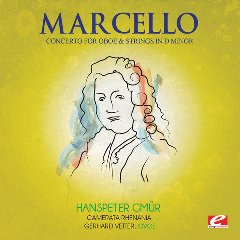
Alessandro Marcello - Oboe Concerto
Alessandro Marcello was the elder of two bothers, born to a noble Venetian family. Like Albinoni, they were dilettante musicians who were able to choose a freelance career rather than regular employment. Possibly for this reason, neither Alessandro nor his brother published a substantial amount of music, but both were entirely serious musicians of considerable capability. It is likely that a substantial body of manuscript works by both brothers has been lost. Alessandro's largest collected body of works is a set of concertos published under the title 'La Cetra' sometime between 1730 and 1740. They were issued under the pseudonym of Eterio Stinfalico, probably to disguise his noble background.
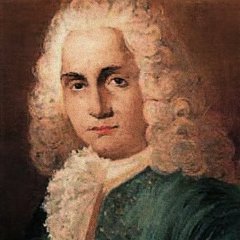
Alessandro Marcello
The two brothers were both amateurs and didn’t make their living through their art, as Vivaldi and others did. Instead, they wrote skillful and inventive music for the enjoyment of their friends, who gathered in aristocratic salons around Venice. Alessandro worked variously as a judge, court officer, and merchant, while composing, painting, and writing poetry on the side.
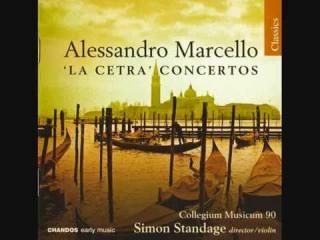
Alessandro Marcello - La Cetra
Alessandro Marcello's (1669, Venice - 1747, Padua) studied law and were members of the city-state's high council. Alessandro was educated at the Collegio di S. Antonio, then joined the Venetian Arcadian society, the Accademia degli Animosi in 1698, and served the city as a diplomat in the Levant and the Peloponnese in 1700 and 1701. After returning to Venice, he took on a series of judiciary positions while dabbling in a number of creative endeavors.
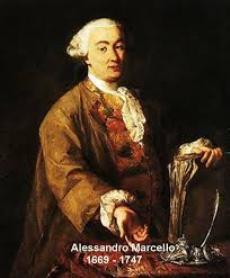
Alessandro Marcello
Marcello's compositional output is small, consisting of not much more than a dozen each of chamber cantatas, violin sonatas, and concertos. His cantatas dealt primarily with pastoral subjects and contained topical references, and, befitting his station in society, were clearly intended for Venice's and Rome's best singers, including Farinelli, Checchino, Laura and Virginia Predieri, and Benedetto's student, Faustina Bordoni. His instrumental works reflect a knowledge and understanding of the differences in French, Italian, and German music of the time, including choices of instruments for both the solo and continuo parts and use of ornamentation.
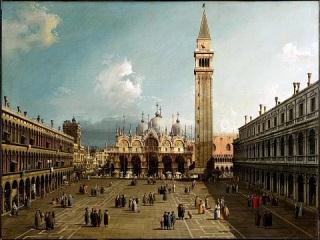
Venice, 18th century (Canaletto)
His D minor Oboe Concerto reflects the familiar and civilized language of the Baroque and thus provides an interesting comparison to the contrasting moods of the later style of Bellini. Marcello maintains a ‘single affection’ within each movement, where contrasts of texture and volume are wrought, but not of sentiment. The Adagio is notable, apart from its general ambience, for its upwardly-spiralling oboe theme, enhanced by distinctive ornamentation. The final Presto is delightfully light and fleet-footed and provides a felicitous ending to a most engaging piece.
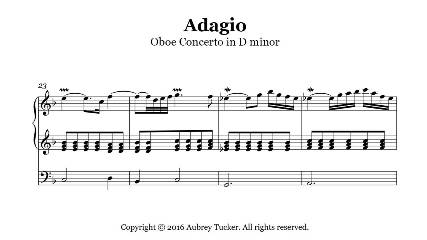
Adagio
Of all of his works, what is best known is the Adagio from the Oboe Concerto, which has become a staple of wedding music collections.
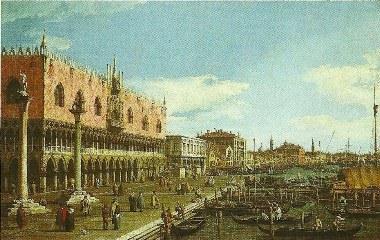
Venice, 18th century (Canaletto)
HenrAlessandro Marcello - Oboe Concerto (I Cameristi della Scala)
Last Updated (Saturday, 20 June 2020 17:26)
